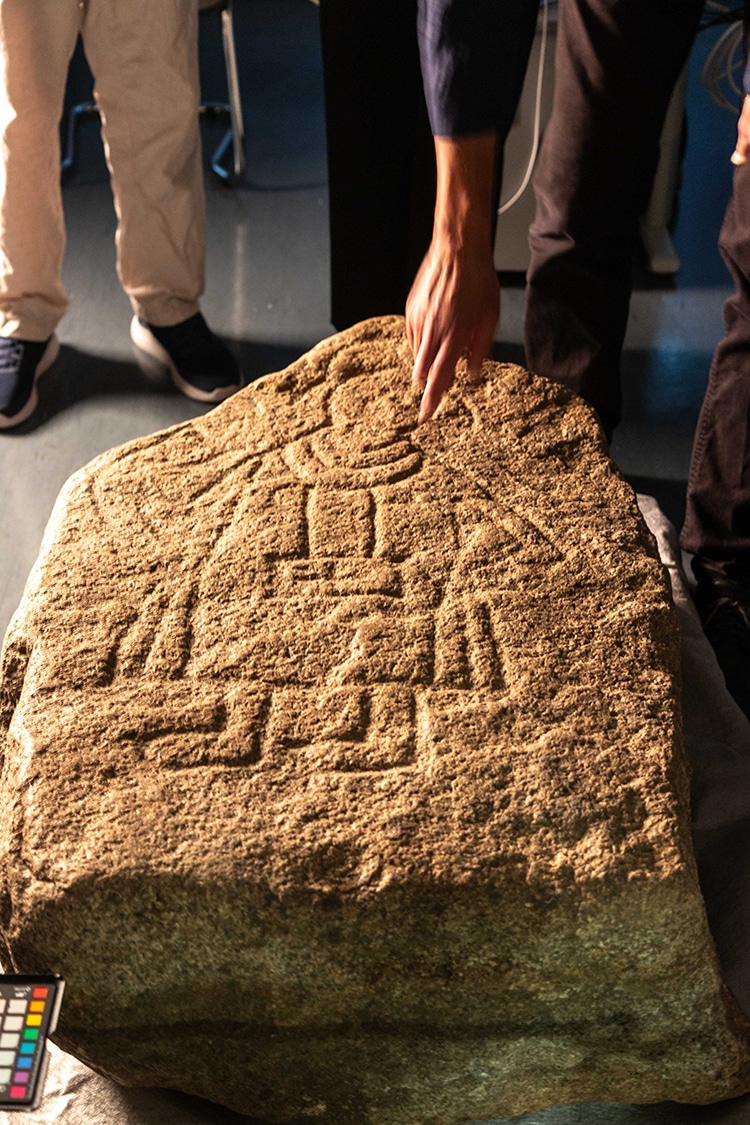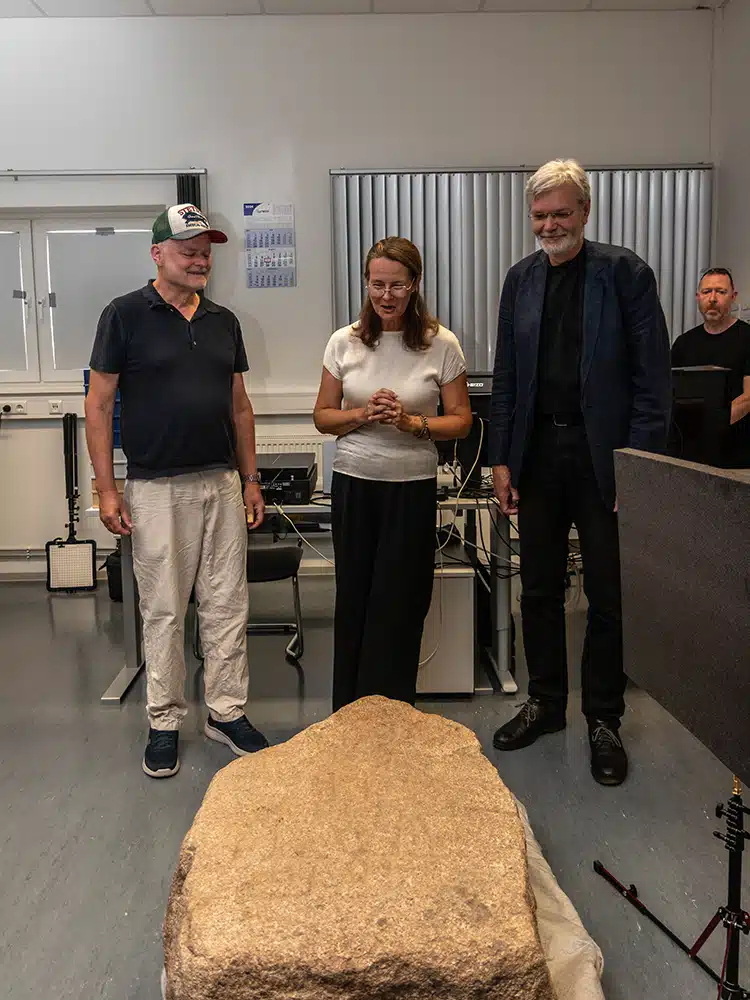
The medieval stone carving. (Photo: WKM MV)
Medieval Europe saw many changes—shifting borders, sweeping epidemics, and cultural diffusion, to name a few. One idea which spread over the period from the fall of Rome onward was the religion of Christianity. The northern reaches of Europe were Christianized by conquest and missions. Among the missionaries who stepped foot in pagan lands was Otto of Bamberg, a 12th-century bishop who preached the gospel in what is now Germany and Poland and who is credited with bringing Christianity to the region. Recently, this fascinating chapter of early Christianity has been in the German news after the discovery of a 900-year-old picture stone, or bildstein, under a house in Klotzow, Germany.
Peter Wittenberg lives in the northern Germany town where the discovery was made. Wittenberg was renovating his home and, in the process, discovered a three-foot-long slab of stone with markings buried beneath his home. The homeowner reported his finding to researchers, who excitedly confirmed its unique nature. Wittenberg had found a picture stone, which is a type of carved monument used in the region from the fourth to twelfth centuries. The stones themselves are exciting anytime they are found, but one with Christian symbols is exceptionally rare.
On the stone, a man is depicted in a robe with a shawl, holding a cross. According to a statement from the local regional government, it is the, “only one to date that shows a figure with a cross in front of its body. It is, therefore, likely that the figure represents a Christian dignitary or at least a follower of Christianity. Such evidence from the period of Christianization is extremely rare.”
Nine hundred years ago, the Bishop Otto of Bamberg set off for the land known as Pomerania, now parts of Germany and Poland. The year was 1124 C.E., right around when the newly discovered stone was crafted. It is, therefore, quite possible that the depiction represents the bishop himself. This is made more likely by Klotzow’s position on the hypothesized path of the missionary priest centuries ago. Additionally, the figure depicted on the stone wears a shawl similar to a pallium, worn only by high-ranking churchmen. If the stone, in fact, depicts Otto, it is the first known picture stone in the region immortalizing a Christian dignitary.
“Whether the bildstein is showing Otto or not: This is an absolutely outstanding find, that leads us back to the time when Christian religion first came to Pomerania, brought by Otto, who is at the same time famous for his success to negotiate peace between the Polish duke and the Pomeranian nobility,” shares Detlef Jantzen, chief archaeologist of the German state Mecklenburg-Vorpommern, where the stone was found.
This picture stone from 900 years ago contains Christian symbols and possibly depicts a medieval bishop who came to Christianize Germany.

The finder of the carving admires it with scholars. (Photo: WKM MV)
h/t: [Live Science, Smithsonian Magazine]
Related Articles:
Ancient Roman Mosaic of Marine Life Discovered in England
303 Newly Discovered Nazca Geoglyphs Depict a Wide Array of Animals and Humanoids
African Rock Art Demonstrates How Indigenous People Were Early Paleontologists
Volunteer Archeologist Unearths Rare Pictish Ring in Scotland
